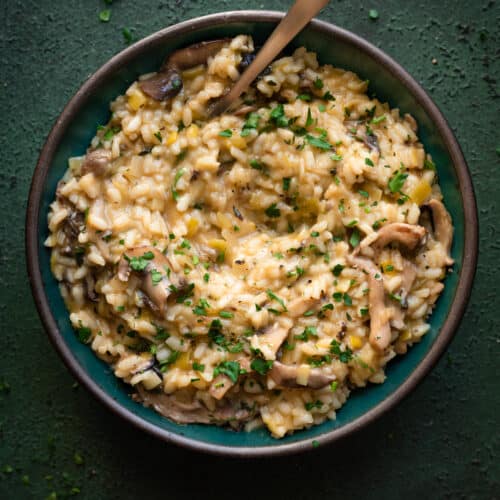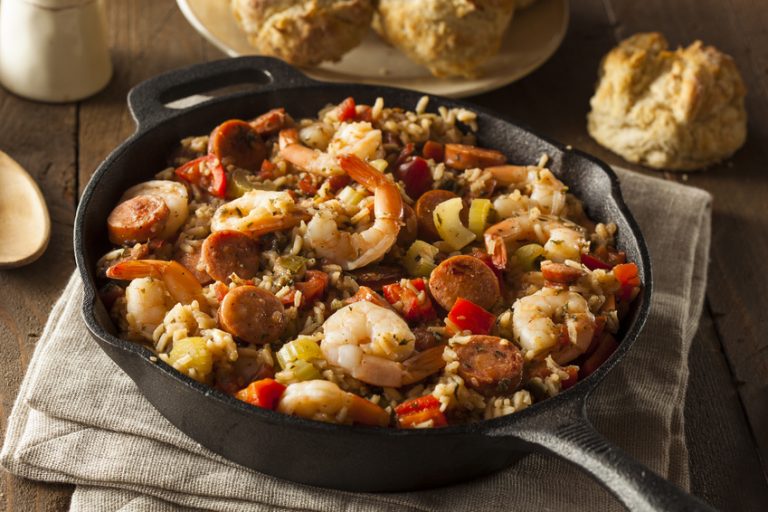Rice Cooker Risotto: Tips for Perfect Texture and Flavor Every Time
Risotto is a creamy Italian dish made from Arborio rice, known for its high starch content. Traditionally, you cook Arborio rice slowly, adding broth incrementally. Stirring constantly releases the starch, giving the dish its signature creamy texture. Basic ingredients usually include rice, broth, onions, white wine, butter, and Parmesan cheese. Variations might feature mushrooms, seafood, or vegetables like spinach.
Differences Between Traditional and Rice Cooker Risotto
Traditional risotto requires continuous stirring and gradual addition of liquid, making it labor-intensive. This method ensures even absorption of broth and proper starch release. In contrast, rice cooker risotto simplifies the process by automating heat and timing. You add all ingredients at once, close the lid, and let the rice cooker manage the cooking cycle. While the texture might be slightly less creamy than traditional risotto, the convenience, and consistent results make it an appealing alternative.
Using a rice cooker, you save time and minimize effort while still achieving a flavorful and satisfying dish. This method allows you to multitask without compromising the quality of your risotto.
Choosing the Right Rice Cooker
Key Features to Look For
When selecting a rice cooker for making risotto, several features enhance the cooking experience. A non-stick inner pot prevents the rice from sticking to the sides and bottom, ensuring easier cleanup and a smoother cooking process. Look for models with a dedicated risotto setting, which fine-tunes the cooking parameters for optimal results. A keep-warm function maintains the risotto at the perfect serving temperature, allowing flexibility in serving time.
A rice cooker with an induction heating system provides more precise temperature control and even heat distribution, resulting in better consistency. Check for an adjustable timer to customize the cooking duration based on the recipe. Lastly, consider the capacity. A 5-6 cup uncooked rice capacity works well for most households, while a larger model might be suitable for bigger gatherings.
- Zojirushi NP-HCC10XH:
- Features: Induction heating, keep-warm function, non-stick inner pot, and multiple menu settings including a specific risotto mode.
- Capacity: 1 liter (5.5 cups uncooked rice).
- Cuckoo CR-0655F:
- Features: Fuzzy logic technology, non-stick coating, keep-warm function, and multiple cooking modes.
- Capacity: 1 liter (6 cups uncooked rice).
- Panasonic 5-Cup (Uncooked) Rice Cooker with Fuzzy Logic and One-Touch Cooking:
- Features: Fuzzy logic technology, non-stick inner pan, keep-warm function, and one-touch cooking.
- Capacity: 1 liter (5 cups uncooked rice).
- Instant Zest Plus 20-Cup Rice and Grain Cooker:
- Features: 9-in-1 functionality includes slow cooking, steaming, and sautéing, along with a non-stick pot and keep-warm function.
- Capacity: 4 liters (20 cups cooked rice).
Selecting the right rice cooker involves considering these key features and recommended models, which enhance the risotto-making experience by providing convenience, efficiency, and consistent results.
How to Make Risotto in a Rice Cooker
Ingredients Needed
To make risotto in a rice cooker, you’ll need:
- Arborio rice (1 cup): Essential for risotto due to its high starch content.
- Chicken or vegetable broth (4 cups): Provides the liquid base and flavor depth.
- White wine (½ cup): Enhances the dish’s complexity.
- Onion (1, finely chopped): Adds a savory base.
- Garlic (2 cloves, minced): Infuses rich flavor.
- Olive oil (2 tablespoons): For sautéing.
- Butter (2 tablespoons): Adds creaminess.
- Parmesan cheese (½ cup, grated): Enhances texture and flavor.
- Salt and pepper (to taste): For seasoning.
- Optional ingredients: Mushrooms, peas, or asparagus for added texture and flavor.
- Sauté Aromatics: Turn on the rice cooker to its sauté setting, if available. Add olive oil, chopped onion, and minced garlic. Sauté until translucent, roughly 3 minutes.
- Add Rice: Add Arborio rice to the pot, stirring to coat in the oil and allow grains to toast slightly for about 2 minutes.
- Deglaze with Wine: Pour in the white wine, stirring until it’s mostly absorbed by the rice.
- Add Broth: Pour in the chicken or vegetable broth. Stir to combine.
- Cook: Close the rice cooker. Set it to the ‘white rice’ or ‘risotto’ setting if available. Let it cook until the rice has absorbed most of the liquid, which takes around 20-25 minutes.
- Stir and Season: Open the lid, stir the risotto, and add butter, Parmesan cheese, salt, and pepper. Mix until creamy. If adding vegetables like mushrooms or peas, do so now and let it sit for 5 minutes on the ‘keep warm’ setting.
- Serve: Your rice cooker risotto is ready to serve hot. Garnish with extra Parmesan and a sprinkle of herbs if desired.
Using a rice cooker simplifies risotto making, freeing you from constant stirring and ensuring a delicious result every time.
Tips and Tricks for Perfect Rice Cooker Risotto
Achieving the Right Texture
Focus on the type of rice. Arborio rice is preferred for its high starch content, which creates the creamy texture ideal for risotto. Rinse the rice lightly, if at all, to retain starch.
Use the correct ratio of liquid to rice. Generally, for every cup of rice, use four cups of broth. This ensures the right consistency without overcooking or drying out the rice.
Check the risotto periodically, even though the rice cooker automates much of the process. Give the risotto a stir halfway through the cooking cycle to evenly distribute starch and flavor.
Flavor Enhancements
Incorporate aromatics at the beginning. Sauté onions and garlic in the rice cooker using the sauté function if available. This enhances the depth of the risotto’s flavor.
Deglaze with wine before adding broth. Pour in a half-cup of white wine and let it reduce, adding another layer of flavor complexity to the dish.
Add herbs and spices after cooking. Freshly chopped parsley, basil, or thyme brighten the dish, while freshly ground black pepper adds subtle heat.
Use high-quality broth. Homemade or store-bought, ensure the broth is full-flavored, as it significantly impacts the risotto’s overall taste.
Conclusion
Mastering rice cooker risotto is a game-changer for any home cook. By embracing this method you can enjoy the rich creamy texture of traditional risotto with minimal effort. With the right tips and techniques you’ll elevate your dish to new heights ensuring every bite is packed with flavor. So grab your rice cooker and get ready to impress your taste buds and dinner guests alike.






